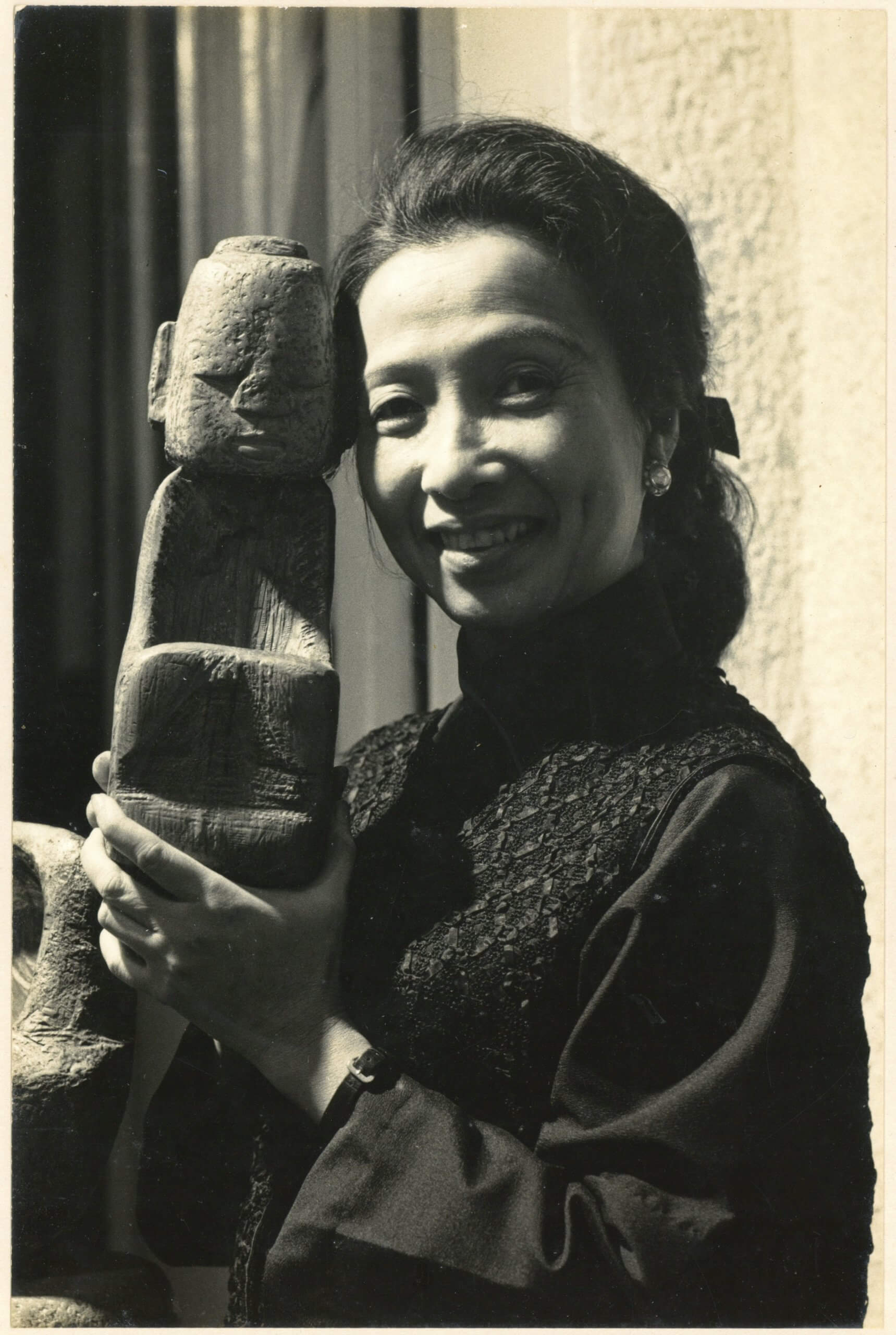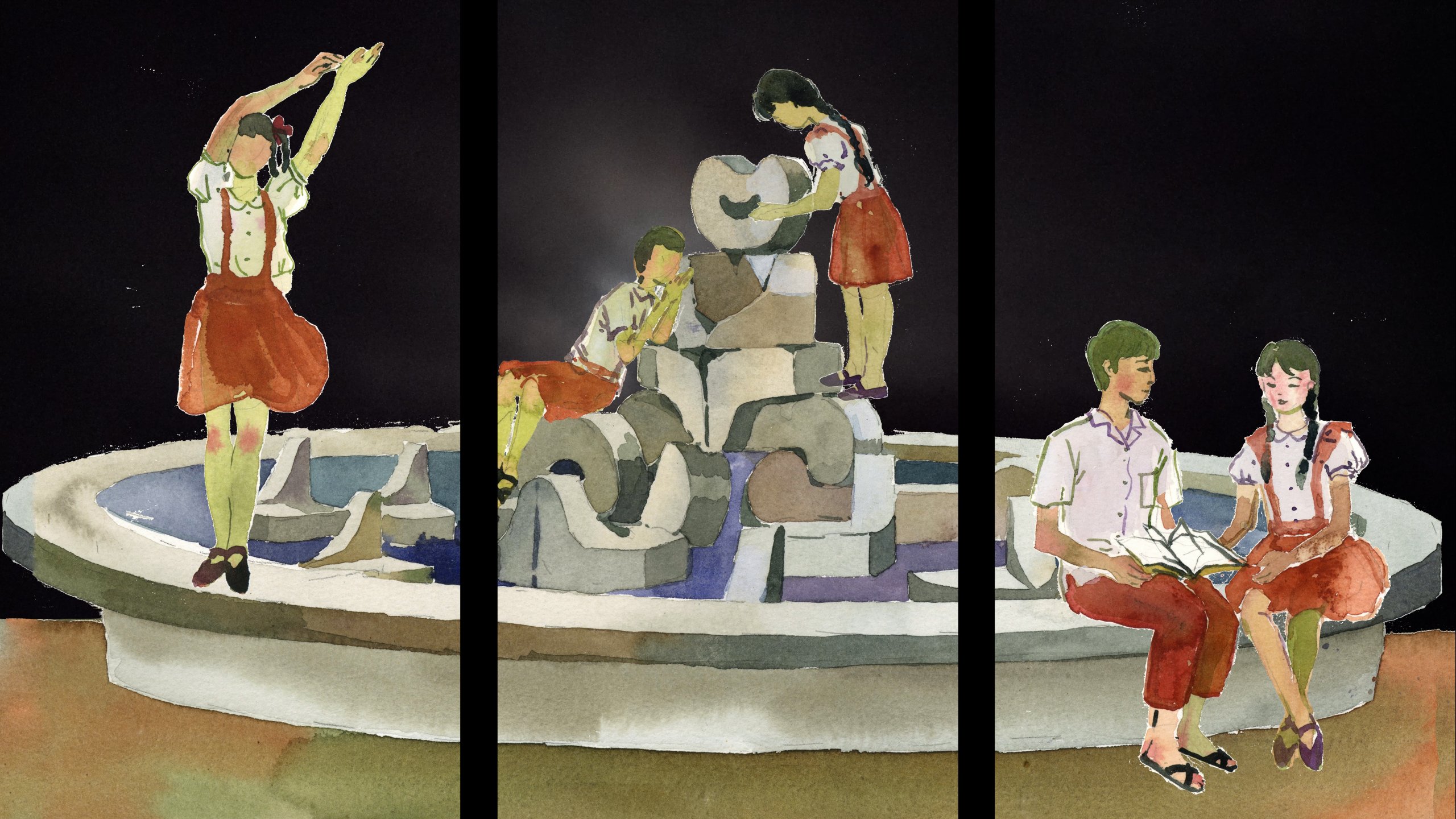SEARCH THE ENTIRE SITE

Diem Phung Thi
ArtistInspired by the human body, Vietnamese culture and especially architecture, Diem Phung Thi’s (1920-2002, Hue, Vietnam) practice was multi-faceted: sculpture, printmaking, collage, painting, jewelry and furniture. After several years of figurative work, she devised seven modular forms that could be assembled in a variety of ways. These modules are like an alphabet or musical notes: limited in number but infinite in terms of composition. The artist enjoyed playing as much with scale as with materials, from the most solid to the most delicate, from sculpture in the public space to precious jewelry. The playful aspect of her research has led her to work for young audiences, notably with the creation of furniture for schools and media libraries – the artist was keen for her works to be part of everyday life.
This major figure in twentieth-century Vietnamese art moved to France for health reasons in 1948. She began a career as a dentist but gave it up after ten years to devote herself to artistic creation, training in Antoniucci Volti’s studio at the Ecole des arts appliqués in the early 1960s. She has created more than thirty sculptures in public spaces in France, for schools, parks, businesses and public buildings. Diem Phung Thi exhibited in galleries and cultural institutions in Europe from 1966 to 1993, and in Vietnam from 1978. In 1992, she was elected a corresponding member of the European Academy of Sciences, Arts and Culture. She returned to live in Vietnam the same year, donating nearly four hundred works to her hometown of Hue and helping to set up a foundation dedicated to her work.
